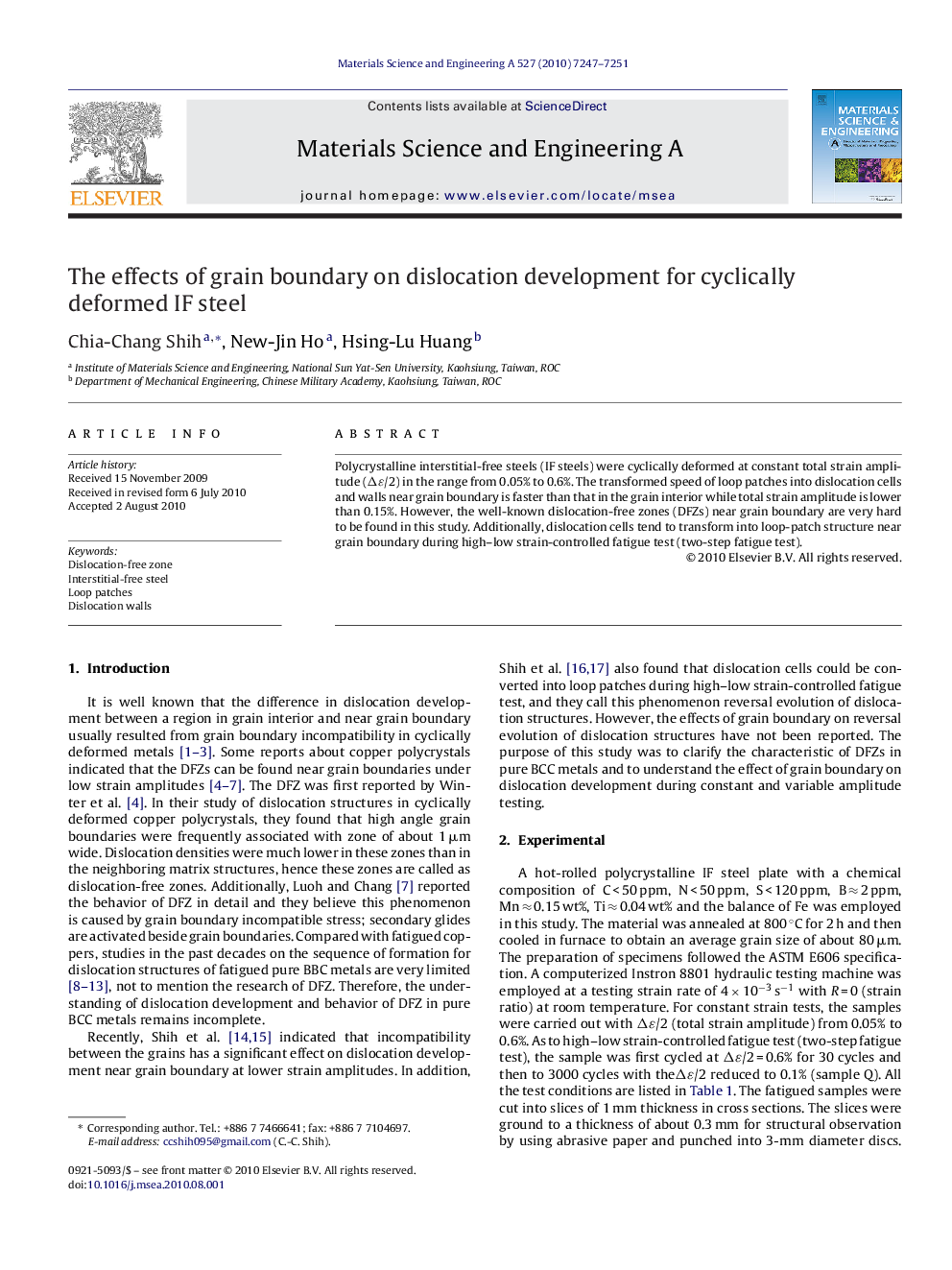| کد مقاله | کد نشریه | سال انتشار | مقاله انگلیسی | نسخه تمام متن |
|---|---|---|---|---|
| 1579397 | 1514825 | 2010 | 5 صفحه PDF | دانلود رایگان |

Polycrystalline interstitial-free steels (IF steels) were cyclically deformed at constant total strain amplitude (Δɛ/2) in the range from 0.05% to 0.6%. The transformed speed of loop patches into dislocation cells and walls near grain boundary is faster than that in the grain interior while total strain amplitude is lower than 0.15%. However, the well-known dislocation-free zones (DFZs) near grain boundary are very hard to be found in this study. Additionally, dislocation cells tend to transform into loop-patch structure near grain boundary during high–low strain-controlled fatigue test (two-step fatigue test).
Research highlightsCompared with fatigued coppers, studies in the past decades on the sequence of formation for dislocation structures of fatigued BBC metals are very limited, not mention to the behaviors of dislocation-free zones (DFZs). In our investigation, the transformed speed of loop patches into dislocation cells and walls near grain boundary is faster than that in the grain interior while total strain amplitude is lower than 0.15% polycrystalline interstitial-free steels. However, the well-known dislocation-free zones (DFZs) near grain boundary are very hard to be found in this study. Additionally, dislocation cells tend to transform into loop-patch structure near grain boundary during high–low strain-controlled fatigue test (two-step fatigue test). Therefore, the developments and behaviors of dislocation structures are indeed effected by grain boundaries during constant and variable stain amplitude testing.
Journal: Materials Science and Engineering: A - Volume 527, Issues 27–28, 25 October 2010, Pages 7247–7251